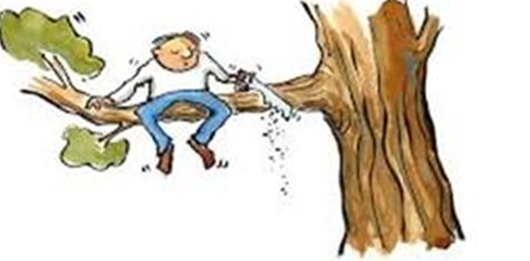We hear it all the time, this call for ‘common sense’:
· https://www.examiner.com.au/story/6690707/time-for-common-sense-approach-to-covid-19/
· https://www.newsport.com.au/2020/march/coronavirus-facts-common-sense-and-compliance/
· https://hackernoon.com/common-sense-for-companies-during-the-covid-19-pandemic-mv8h32hs
· https://www.commonsensemedia.org/app-reviews/pandemic-the-board-game
· https://www.nzherald.co.nz/world/news/article.cfm?c_id=2&objectid=12318713
Of course if common sense existed you would neither have to talk about it or request it. It is because knowledge is not common that people become frustrated with others who don’t see the world as they do.
The plea for common sense is often used in statements of blaming, deficit comment or to indict a group of people:
· https://www.commonsense.org/
· https://borderwatch.com.au/education-facilities-adopt-common-sense-approach-to-virus-pandemic/
· https://thehill.com/blogs/in-the-know/488970-tom-hanks-urges-common-sense-over-coronavirus-restrictions-this-too-shall
The idea of something being in ‘common’ is that ‘it’ is shared normally by all. Every time we use the semantics of ‘common sense’ in our language we demonstrate whatever we want as not being in common. The Cambridge Dictionary defines common sense as:
‘The basic level of practical knowledge and judgment that we all need to help us live in a reasonable and safe way’.
Of course we don’t believe in common sense which is why we have education, training campaigns, schooling, licenses and inductions to try to create common knowledge. Just imaging if everyone drove on the road according to their own definition of common sense? Just imagine if you walked on a building site with your only defence being common sense? Just imagine if people pleaded with you to social distance to contain a pandemic and you decided that meant crowding together on a beach or in an airline queue (https://www.abc.net.au/news/2020-03-26/coronavirus-fears-at-sydney-airport-after-video-shows-long-lines/12092796). And still the message continues ‘you are not immune, use your common sense’!
The real problem with the concept of common sense is talking about it, similar to talking about the concept of zero. We would be much better off if we were silent on both concepts and withdrew such language from our discourse.
We have the ability to remain silent on many things. There are many things we choose to be silent about because we know talking about such things is dangerous. For example, we voluntarily don’t talk about complex, violent or explicit sexual things around children. Wouldn’t it be great if we could do the same with the language of ‘common sense’ and ‘zero’. Similarly, we don’t publicize suicide methods for the same reason (https://www.washingtonpost.com/news/to-your-health/wp/2014/08/12/what-happens-when-a-suicide-is-highly-publicized-in-the-wrong-way-the-suicide-contagion-effect/; https://www.poynter.org/reporting-editing/2019/reporting-on-suicide-consider-these-common-problems-and-their-solutions/). If the safety industry wanted to mature and become professional it would have to learn to be silent on a few things like ‘common sense’ and ‘zero’. The opposite is the case. This is how we end up with such nonsense mantras like ‘safety is a choice you make’ and ‘all accidents are preventable’.
The real problem with ‘common sense’ language is its semiotic power and influence on the unconscious. Such language and the concoction of associated images create this idea of a sensible group who have ‘common sense’ and a bunch of idiots who don’t. A search of Google images and Pinterest demonstrates what images come to mind when we think of common sense eg.
Duncan Watts book (2011) ‘Everything is Obvious, Once You Know the Answer, How Common Sense Fails’ ought to be a foundational text for all safety people. Unfortunately, you won’t find such a text on any WHS reading list nor in the AIHS BoK because the safety industry is the worst at perpetuating this myth/symbol of common sense. Yet, everything Safety does to perpetuate common knowledge denies this mythical thing it calls ‘common sense’.
Myths and semiotics work interchangeably so that beliefs get attributed to a symbol as if it is true and real, when it is not. This is the power of semiotics. And so, many people in public office (https://7news.com.au/lifestyle/health-wellbeing/scott-morrison-announces-recommendation-against-all-non-essential-travel-c-756725, https://7news.com.au/lifestyle/health-wellbeing/scott-morrison-announces-new-coronavirus-changes-to-change-australians-daily-life-c-760566) continue to use this language of ‘common sense’ and believe it is real without thinking of its trajectory or affect. Then when such appeals fail they don’t reframe their unsuccessful language but progress to talk about ‘common sense rules’??? (https://www.rep-am.com/local/arts-entertainment/local-arts/2020/03/23/when-pandemic-hits-shop-with-common-sense/; https://www.bbc.com/news/uk-scotland-52061936). Do these people actually stop for a second and listen to the implications of what they are saying?
So what is the way forward? Learning to be silent about language that is ineffectual and symbolically dangerous is the path of maturity and professionalism. So in the words of our Prime Minister Scott Morrison if you don’t have common sense and hoard resources during a Covid-19 pandemic: ‘stop it’ https://www.youtube.com/watch?v=pei0qERW5b4 . Unfortunately, when the appeal to common sense fails, the next step becomes authoritarian not educational.




Do you have any thoughts? Please share them below